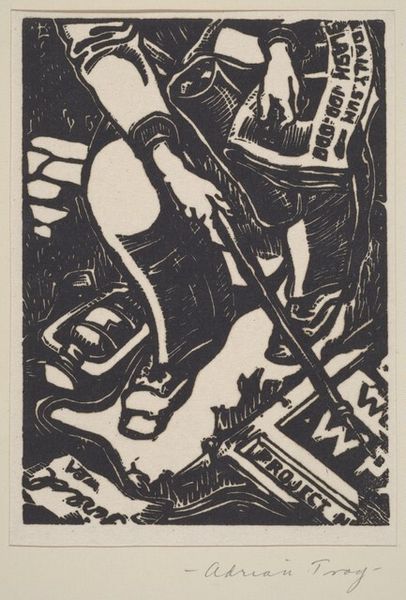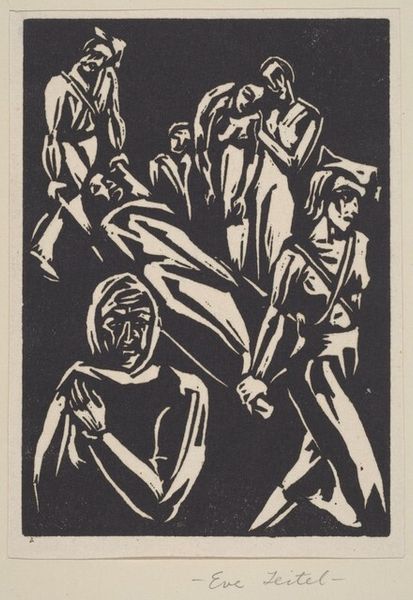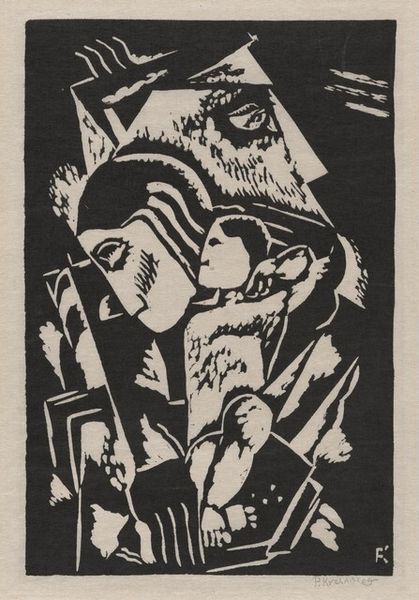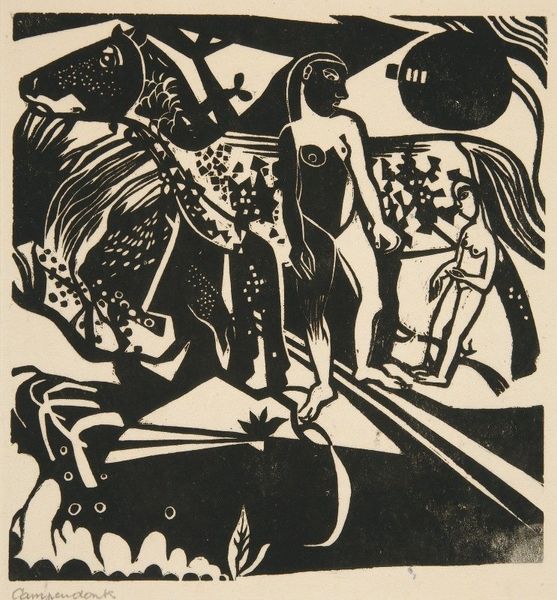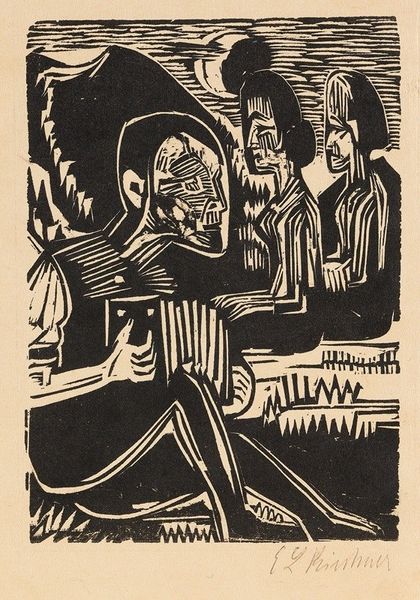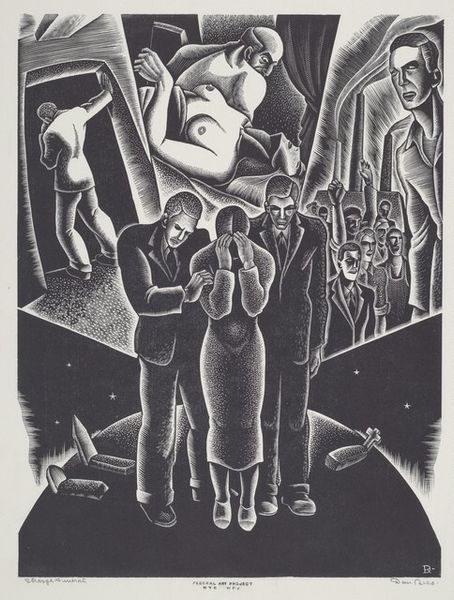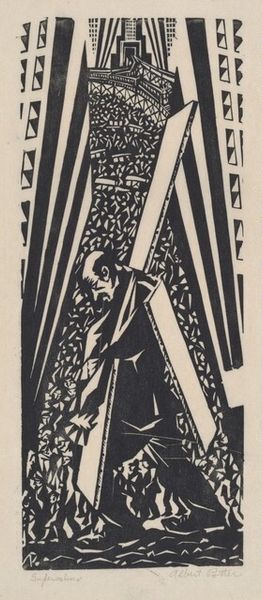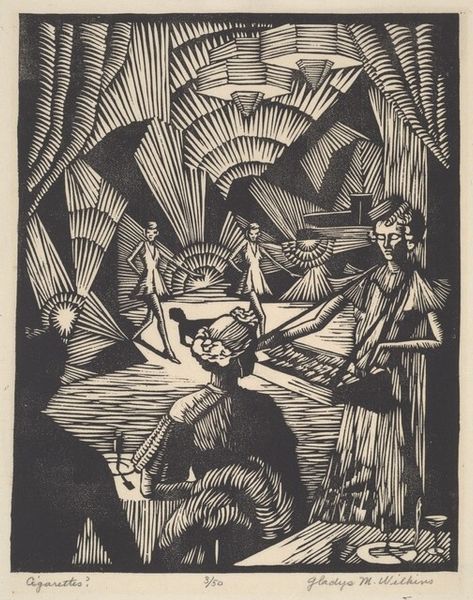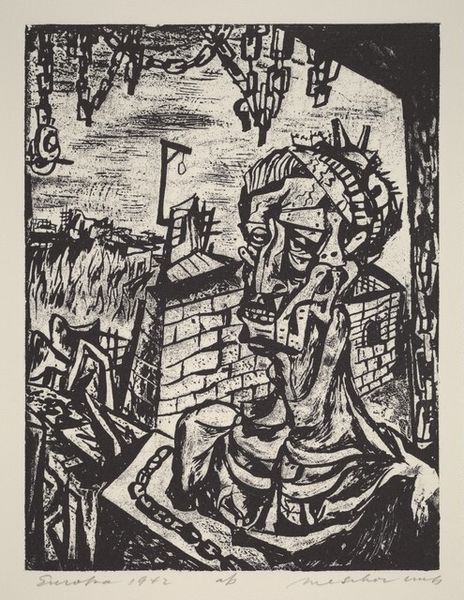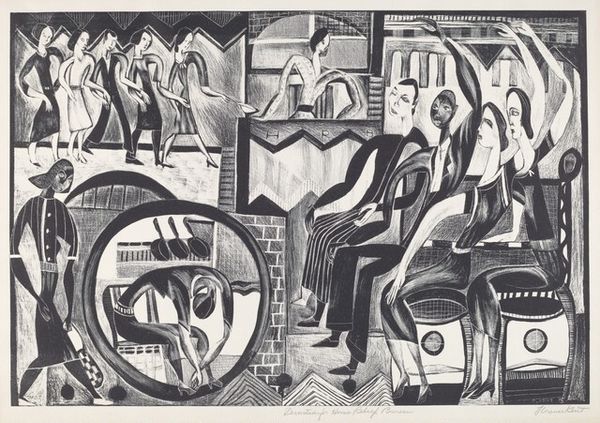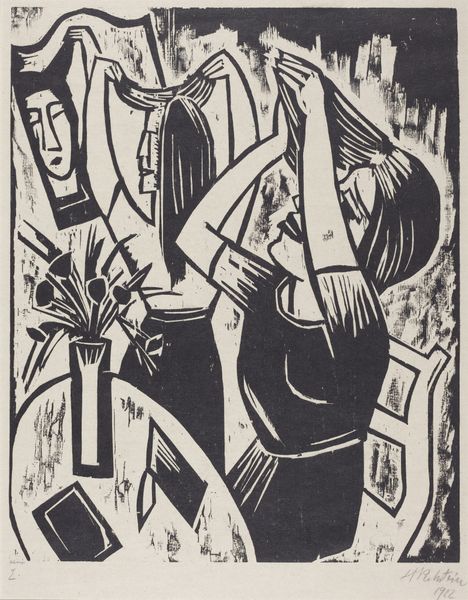
graphic-art, print, woodcut
#
graphic-art
#
narrative-art
# print
#
social-realism
#
woodcut
#
modernism
Dimensions: image: 181 x 114 mm paper: 205 x 142 mm
Copyright: National Gallery of Art: CC0 1.0
Curator: What a powerful piece! We're looking at Charles Turzak's "Workers II Alternative," a woodcut print created around 1934. It really embodies the Social Realist style of the time. Editor: Stark. The high contrast is immediately striking. It’s a strong image, full of contrasts both dark and light that amplify this impression of a muscular and determined working class. Curator: Absolutely. Turzak used the woodcut medium to its fullest extent, simplifying forms to create a compelling image and the stark black and white, I believe, highlights the core materials of its production, wood, ink, paper – it speaks to the directness and accessibility that Social Realism championed, especially during the Depression era. Editor: Notice how these figures – the manual laborer with his hammer, the skilled worker, and the intellectual with an open book – all loom from the print? The book, significantly, carries what looks like a laurel wreath. What are they meant to be gaining through knowledge? The whole tableau speaks volumes, with visual symbols loaded with optimism that work betters existence. Curator: I'd agree. You know, this was a period when art became closely linked with progressive social movements, like worker education programs which really aimed to empower the labor force. Considering that workers at the time had limited exposure to art in general and fine arts were mainly produced by wealthier patrons who sought different forms of representation, this really shifted production towards workers instead of more traditional and higher society themes and purposes. Editor: Fascinating! Turzak isn’t merely showing laborers toiling. He suggests that education is an intrinsic part of workers finding and defining themselves. Hilda W. Smith's calligraphic inscription below the figures confirms the association of progress through “courage, beauty, strength.” Curator: Well, examining the historical moment in terms of available materials for arts, especially those which would reach wider audiences... the very process, using a relatively inexpensive printmaking technique made possible wide distribution... The messages it carried then were incredibly influential and relevant in its call for representation of marginalized people. Editor: The symbols embedded in this print are more powerful considering their wider message and history, with connotations that go far beyond Social Realism; I believe "Workers II Alternative" stands the test of time in its narrative as a cultural force for justice and dignity. Curator: Indeed. Considering both material factors and cultural symbols at play offers profound perspectives and informs further analysis!
Comments
No comments
Be the first to comment and join the conversation on the ultimate creative platform.
